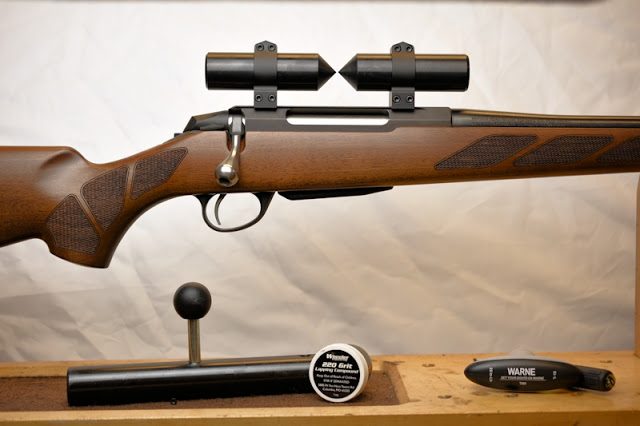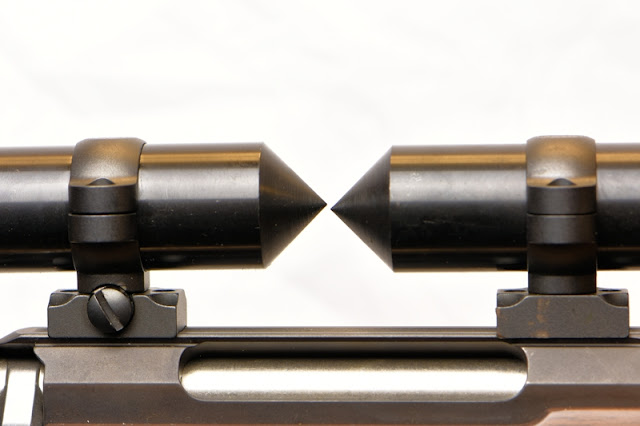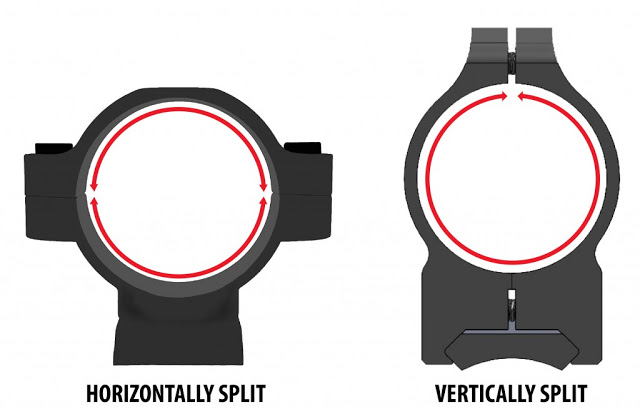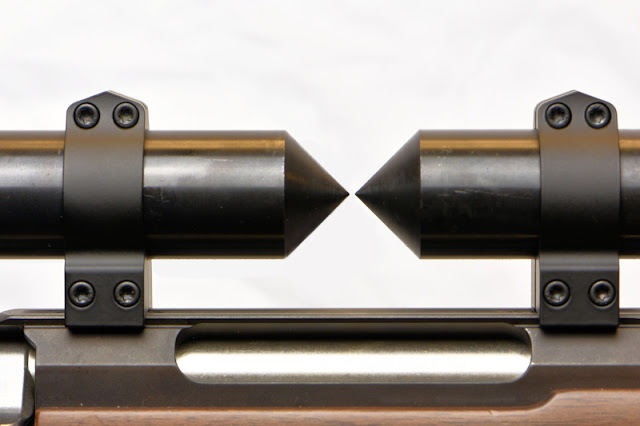Today’s post was written by the folks at Warne Scope Mounts. They have graciously allowed me to repost this blog entry. As I begin my 2016 hunt planning, I have decided on a new rifle build. More to come on that later. With that, I will be adding a new MINOX scope. Last hunting season gave me the opportunity to get my .270 set up with a new MINOX scope. I bought horizontal scope rings and a lapping kit. I spent an evening getting everything just right and am very happy with how it turned out. The rifle shoots well and life is good! When I started researching my new scope, I noticed a photo on Facebook from the 2016 SHOT SHOW where a MINOX scope was mounted on a rifle with the Warne scope rings. Further inspection and research showed me that they have a great set up with vertically split rings. When this blog post came up in my research I was sold. Read it for yourself and let me know what your thoughts are on scope rings.
Content and photos copyright Warne Scope Mounts. Check out their story when you get a chance!
__________________________________________________________________________

Is lapping needed?
When using some designs of scope mounts, lapping is recommended to get the best performance. Lapping can increase the amount of surface contact between the ring and scope tube, and also help with proper alignment between the scope rings. If one were to read the installation instructions for Warne Maxima vertically split rings, Lapping is not recommended. The important question is why Warne does not recommend lapping when so many other ring brands do?
To start out, what is lapping? The process of lapping in its rudimentary form is taking 2 or more surfaces, applying some kind of abrasive compound between them, then creating friction between the parts. this process smooths and polishes the surfaces, and helps contour the surfaces so they mate better. Specifically applied to scope rings, the user would assemble the base and rings with a steel lapping bar; a lapping compound (which is basically an abrasive liquid or paste) is applied to the bar. The rings are tightened to the point where the bar can move, but with slight resistance, and the bar is worked back and forth. When the lapping job is done, the bar and compound knocks down high spots, and rough patches, all while essentially polishing the ring surface that contacts the scope tube. Since it is a common practice with horizontally split rings, it can also help make sure the ring cap is properly aligned with the ring body. Lapping is valid practice, and can improve the performance of certain kinds of mounts, especially those that are windage adjustable.

Since lapping has all of these benefits, why does Warne not recommend it? First and foremost, vertically split rings like Warne Maxima should not be lapped due to their basic design. With a horizontal split, you have a ring body, and a ring cap. The ring body attaches to the base, and the cap is secured with screws, applying a vise-like clamping pressure on a scope tube. Maxima rings attach to the base and the bottom of the ring comes to a close. When the top screws are tightened, the ring flexes around the scope tube to apply a hose clamp-type pressure on the tube as explained in our Why Vertically Split? Blog post. Maxima rings have only one small gap at the top where the ring is not in contact with the scope tube. Compared to horizontally split rings, the vertical split starts out with more scope tube contact out of the package to begin with.

Since vertically split rings need to slightly flex around the tube to tighten, lapping is difficult to impossible to do correctly. Since the ring is designed to be slightly flexed at the correct torque around the scope tube, to properly lap the ring, it would need to be in that tight flexed state. This would make it so the lapping bar cannot move, so to be able to lap a vertically split ring, the ring must be loose. This can be a problem because the ring will have material removed, changing the shape of the interior surface of the ring. When the ring is then tightened, and flexed around the tube, it is not the correct shape. This can cause high and low spots, as well as uneven pressure on the scope tube.

Windage adjustable, horizontally split rings are most commonly lapped, and for good reason. Windage adjustable rings purposefully push the ring off center from the base, this can lead to misalignment of the 2 rings, putting either a bind on the scope tube, or reducing the holding power of the rings due to a loss in surface contact. These styles of mounts are then lapped to bring everything back into alignment to ensure they function properly. A Warne Maxima ring naturally centers itself on the scope base since the two ring halves evenly tighten. Since the ring naturally centers itself, as long as the receiver is drilled straight, and high quality bases are used, the rings will be in perfect alignment every time without the need for lapping.
While lapping can be a very necessary process when mounting some brands of scope rings, at the end of the day, it is just not needed for Warne mounts. With prices for lapping kits sometimes in excess of $100, Why not save yourself some time and money, and just pick up a set of Warne rings instead?
Link to the original post on the Warne Scope Rings website.
Be First to Comment